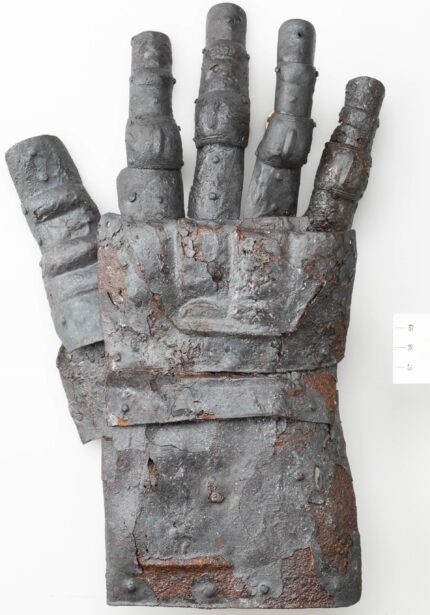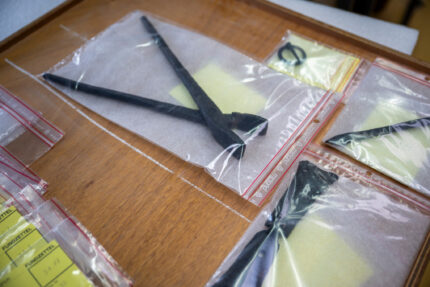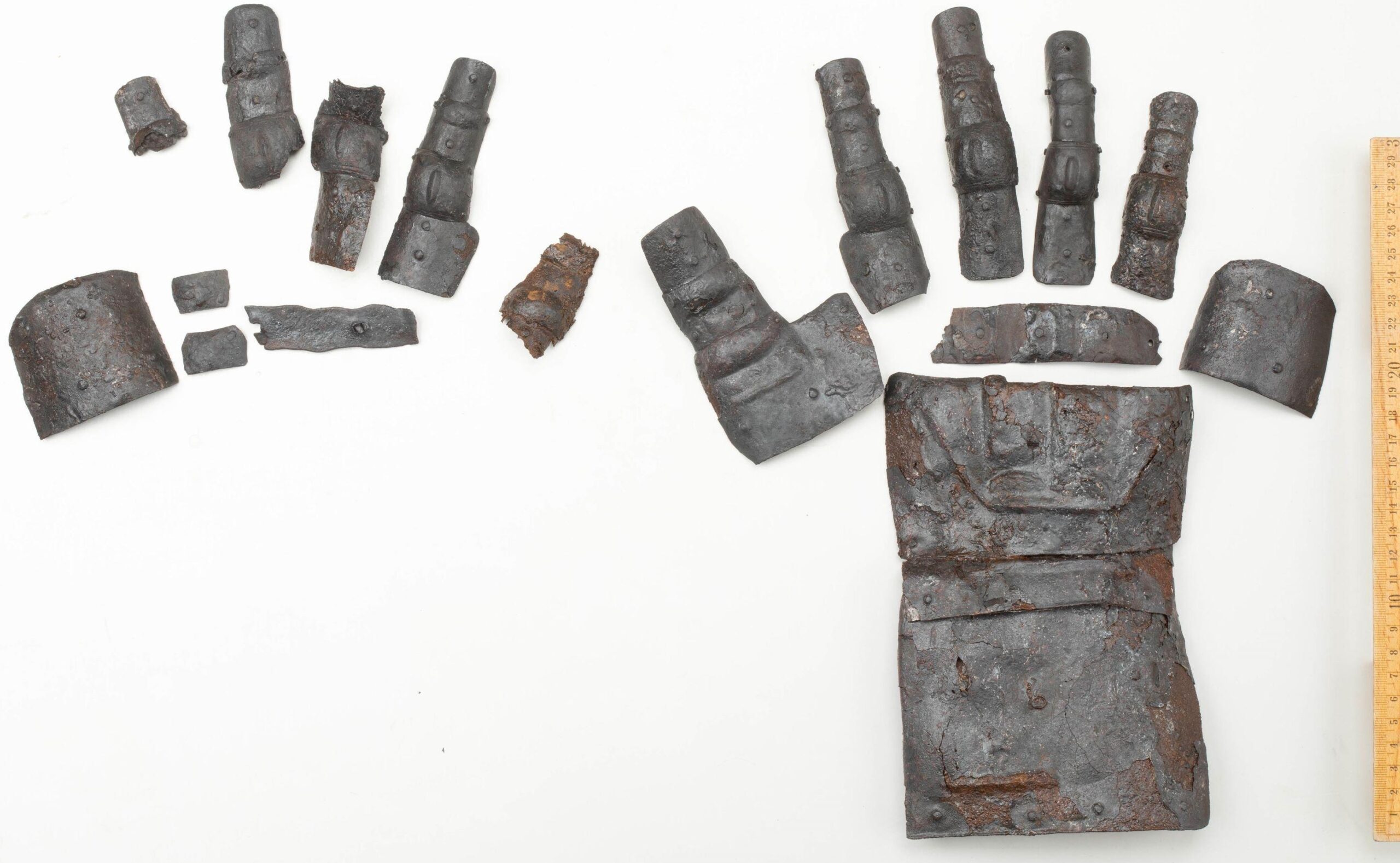
Cantonal archaeologists excavated a site southeast of the castle in the winter of 2021/22 in a rescue operation before construction of a home with a basement. The area is archaeologically significant because the outer bailey of the castle and its defensive walls used to extend over what is now the village of Kyburg. Artisan workshops and the homes of the castle’s servants were located in the outer bailey, so any planned construction there triggers an emergency archaeological investigation.

The complete gauntlet is large, more than 14 inches long. It features individual iron plates that overlap each other like scales and are connected to each other with side rivets. Originally they would have been riveted to a leather or fabric material that would then be sewn onto a leather of textile glove. Thanks to the small plates and flexible underlayers, the wearer could comfortably grip a sword and even make a fist. The design type had remarkable longevity, remaining in use until the Thirty Years’ War (1618-1648).
The gauntlet is currently being kept in the cantonal archaeology offices in Dübendorf. It will go on display for three weeks only at the Kyburg Castle starting on European Heritage Day (September 7th). A 3D-printed replica will be on permanent exhibition at the castle from March 29th.
* This article was originally published here









No comments:
Post a Comment